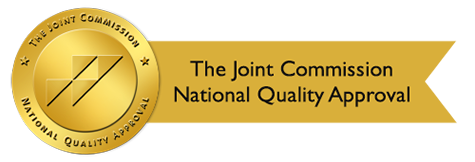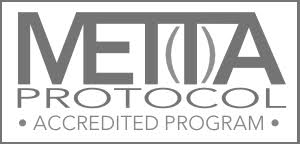EMDR has received some notable attention recently thanks to its effectiveness in treating trauma. There is a lot of information available online and in academic literature of the therapy, so we put together this article as an overview of EMDR to help you understand what it is and how it works.
So what exactly is EMDR and how does it work?
EMDR stands for Eye Movement Desensitization and Reprocessing, and it involves 8 phases including the use of eye movement, or bilateral stimulation, which appears to be similar to what occurs naturally during dreaming or REM (rapid eye movement) sleep. As we wrote about in past blogs, when a person experiences a traumatic event, their brain goes into defense mode and changes its function.
One of these functions includes the hippocampus, which usually works to store memories in a neat filing system that allows us to easily and accurately recall these memories. When faced with a threat, the hippocampus takes on the role of pumping cortisol throughout the body so that we don’t feel pain, and puts the memory storage on the back burner. So it’s no wonder it’s incredibly difficult to recall a traumatic event, or we recall it inaccurately by filling in the blanks later on.
EMDR allows us to go deep into the brain and file these memories with the appropriate meanings and emotions attached to them. According to the EMDR International Association, the goal of EMDR is to:
“Process completely the experiences that are causing problems, and to include new ones that are needed for full health… That means that what is useful to you from an experience will be learned, and stored with appropriate emotions in your brain, and be able to guide you in positive ways in the future. The inappropriate emotions, beliefs, and body sensations will be discarded… The goal of EMDR therapy is to leave you with the emotions, understanding, and perspectives that will lead to healthy and useful behaviors and interactions.”
One of the leading experts on developmental trauma and author of The Body Keeps the Score, Dr. Bessel van der Kolk recalls the experience he had using EMDR on a patient when he realized the power of the therapy. Watch below:
What are the 8 phases of EMDR?
Phase 1: The first phase is a history-taking session(s). The therapist assesses the client’s readiness and develops a treatment plan. Client and therapist identify possible targets for EMDR processing.
Phase 2: During the second phase of treatment, the therapist ensures that the client has several different ways of handling emotional distress. The therapist may teach the client a variety of imagery and stress reduction techniques the client can use during and between sessions. A goal of EMDR therapy is to produce rapid and effective change while the client maintains equilibrium during and between sessions.
Phases 3-6: In phases three to six, a target is identified and processed using EMDR therapy procedures. These involve the client identifying three things:
1. The vivid visual image related to the memory
2. A negative belief about self
3. Related emotions and body sensations.
In addition, the client identifies a positive belief. The therapist helps the client rate the positive belief as well as the intensity of the negative emotions. After this, the client is instructed to focus on the image, negative thought, and body sensations while simultaneously engaging in EMDR processing using sets of bilateral stimulation. These sets may include eye movements, taps, or tones.
Phase 7: In phase seven, closure, the therapist asks the client to keep a log during the week. The log should document any related material that may arise. It serves to remind the client of the self-calming activities that were mastered in phase two.
Phase 8: The next session begins with phase eight. Phase eight consists of examining the progress made thus far. The EMDR treatment processes all related historical events, current incidents that elicit distress, and future events that will require different responses.
From EMDR.com
Does it actually work?
At least 20 positive controlled outcome studies have been done on EMDR therapy. According to the EMDR Institute, which hosts a comprehensive list of EMDR-related research, some of the studies show that 84%-90% of single-trauma victims no longer have post-traumatic stress disorder after only three 90-minute sessions. Another study, funded by the HMO Kaiser Permanente, found that 100% of the single-trauma victims and 77% of multiple trauma victims no longer were diagnosed with PTSD after only six, 50-minute sessions.
EMDR International Association reports on the same topic, “Clients often report improvement in other associated symptoms such as anxiety. The current treatment guidelines of the American Psychiatric Association and the International Society for Traumatic Stress Studies designate EMDR as an effective treatment for post traumatic stress. EMDR was also found effective by the U.S. Department of Veterans Affairs and Department of Defense, the United Kingdom Department of Health, the Israeli National Council for Mental Health, and many other international health and governmental agencies. Research has also shown that EMDR can be an efficient and rapid treatment” (www.emdria.org).
Who does EMDR?
Only Masters-level or Doctoral-level professionals–therapists, nurses and doctors–who have gone through approved EMDR training can provide EMDR to people. Roots Through Recovery is proud to have two clinicians on our team that are trained and certified to provide EMDR. Clients who have undergone EMDR therapy for trauma have seen great improvement in their management of traumatic experiences, and how that plays a role in their addictions and mental health.
Call us via (866) 766-8776 to schedule a FREE consultation with our team or visit us at 3939 Atlantic Ave, Suite 102 Long Beach, CA 90807.
For a free assessment or to find out more, call us today at (562) 304-9592 or email us at info@roots-recovery.com.
Related Articles from Roots:
The Direct Link Between Trauma and Addiction
How Childhood Trauma affects health across a lifetime
Resources & Further Reading:



